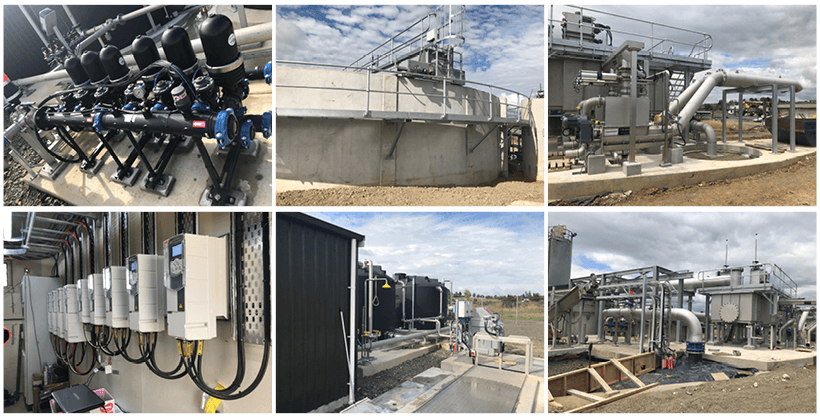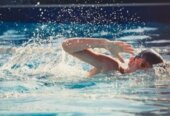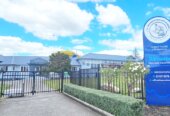Seven Waikato district councils are discussing joining forces to form one council-controlled water organisation while two others want their own and another is sitting on the fence. Chris Gardner reports it’s far from a done deal.
Waitomo District Council’s sewage treatment plant, off Te Kumi Station Road, Te Kūiti, will likely be handed over to the Waikato Water Done Well council-controlled water organisation following public consultation. Waitomo mayor John Robertson is pictured at the plant with council Infrastructure Services general manager Shyamal Ram. Photo: Chris Gardner.
They call themselves the Super Seven and one of them has gone as far to say they’re prepared to become the Energetic Eight if another district wants in.
Hauraki, Matamata-Piako, Ōtorohanga, South Waikato, Taupō, Waipā, and Waitomo district councils have all signed a heads of agreement to create a council-controlled organisation (CCO) called Waikato Water Done Well.
Hamilton city and Waikato district are looking to create their own CCO to be responsible for delivering drinking and wastewater services while Thames Coromandel is having a bob each way.

Waipā mayor Susan O’Regan opens the value last year to send treated water from Cambridge’s new $105 million treatment plant into the Waikato River. The plant takes wastewater from Cambridge, Leamington, Hautapu and Karāpiro Domain. Photo: Supplied
Water reform is one of the most significant events in local government since 1989 when Brian Elwood consolidated 800 plus city, borough and county councils plus the rabbit and road boards into 80 local authorities.
The Labour government had a crack at solving the water problem with its Three Waters solution – drinking, waste and storm water with four publicly owned regional entities – failed miserably and now the coalition government is having a go.
Some are calling it merger by stealth but for the moment the most important deadline facing councils is to decide by the end of June and by September 3 they must have submitted a plan to the government-mandated Local Water Done Well legislation for implementation by June 30 next year.
The Waikato Mayoral Forum sent a delegation to Wellington in February to inform local government minister Simon Watts of its progress. Sources say he was impressed.

Finishing works took place on the upgraded Te Awamutu wastewater treatment plant four years ago. From top (L-R): new UV system, clarifier and screen. Bottom (L-R): new electrical room, UV and screen. Photo: Supplied.
Of the Super Seven, only three have progressed to identifying Waikato Water Done Well as their preferred option to take to public consultation with an enhanced status quo ring fenced model before settling on a final decision in June.
Waipā District Council, as the council with the largest ratepayer base, voted to consult on joining the six other councils on February 12 and is already out in the community with brochures and advertising.
Waitomo and South Waikato district councils did the same late last month while Ōtorohanga is to choose between Waikato Water Done Well and an enhanced status quo model this month.
Thames-Coromandel has a tougher decision. The district is a long way from Hamilton and Waipā – a mountain range and hundreds of kilometres between them. They are talking to the two Waikato options though and there is even talk of a Bay of Plenty possibility, but they are running out of time.
“We have not quite got there,” says deputy mayor Terry Walker.
“We are in the final stages of looking at the options. It’s a pretty big decision, one of the biggest we have to make.”
“It’s a bit early yet,” says mayor Len Salt after asking the Government for more time to make a decision.
“There’s still a lot of work to do in the meantime.”
Waipā mayor Susan O’Regan says councils needed to be open minded until they had picked a preferred option.
“Some are a little further down the path than others.”
There was a lot of trust between mayors and chief executives helped by the relationship with Vaughan Payne who is leading the Water Done Well work on behalf of the mayoral forum and local iwi.
Waikato Water Done Well would welcome Thames Coromandel District Council as its eighth council if it was picked as a preferred option.
“We would never turn our back on a district in need,” says O’Regan.
The purpose of the joint council-controlled water organisation is to govern and manage drinking water and waste water, between a fifth and a quarter of the operation of most district councils. Storm water management will remain vested in individual councils because it is so strongly linked to roading.
Ageing infrastructure, population growth and environmental considerations are reform drivers.

The giant 1.5 mega litre reserve tank on site at Waipa’s Water Treatment Plant on Parallel Road
Of the other councils yet to decide, the shakiest would appear to be Taupō and Hauraki.
Financial data presented at an Ōtorohanga elected members workshop last month showed the average charge per connection in 2027/28 would be $2792 under Waikato Water Done Well, increasing to $2988 in 2033/34, while going it alone would cost $2956 in 2027/28, increasing to $3070 in 2033/34.
Councillors favoured Waikato Water Done Well in the areas of financial sustainability, operational effectiveness, partnerships, and regional leverage. But an enhanced status quo scored higher in the areas of community connectedness and maintaining viability.
Taupō is considering three options, Hauraki four possibilities and Matamata-Piako two.
Hauraki Service Delivery group manager Adrian de Laborde said he was preparing a council briefing paper on considering a shared services model and contracting drinking and wastewater out to a third-party contractor in addition to Waikato Water Done Well and enhanced status quo.

Waste ponds hold the water in ponds that can be recycled through the system again.

The Waipa plant’s filtration system consists of four filtration racks which the water goes through.
“As staff, what we are trying to get is a consistent approach across all of the modelling.
“We want to compare apples with apples with all of the modelling. We have to consult with the community on the minimum of two options,” says de Laborde.
“We want to work with other Waikato councils,” says Hauraki mayor Toby Adams.
“It’s a council decision. We will look at the options and make sure that the facts and figures stack up.
“We are currently having conversations with other councils about it. Our best foot forward is always going to be what is best for our community.”
Taupō is considering retaining in-house delivery of water services, its own council-controlled water organisation, or choosing Waikato Water Done Well.
That choice is expected mid this month.
Matamata-Piako is considering retaining control or choosing Waikato Water Done Well as its preferred option.
“I don’t want to pre-empt it, I think the evidence is pretty compelling for multiple councils to integrate,” says mayor Adrienne Wilcock.
See: Quenching our thirst
See: Facts at a glance
See: Water partnership means equal say
See: Feedback sought on city options

Cambridge’s new Wastewater Treatment Plant is well on track to open in 2026










